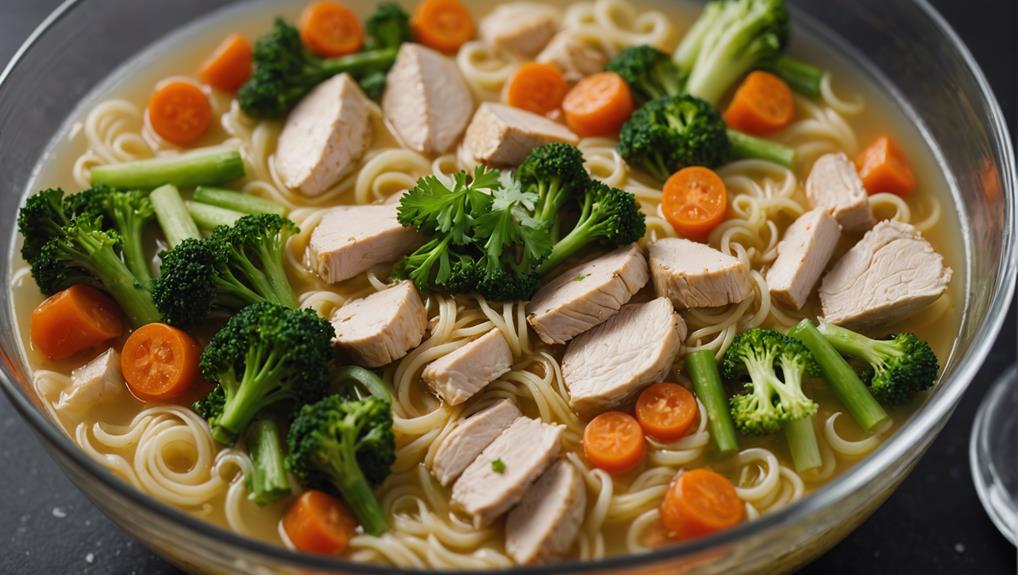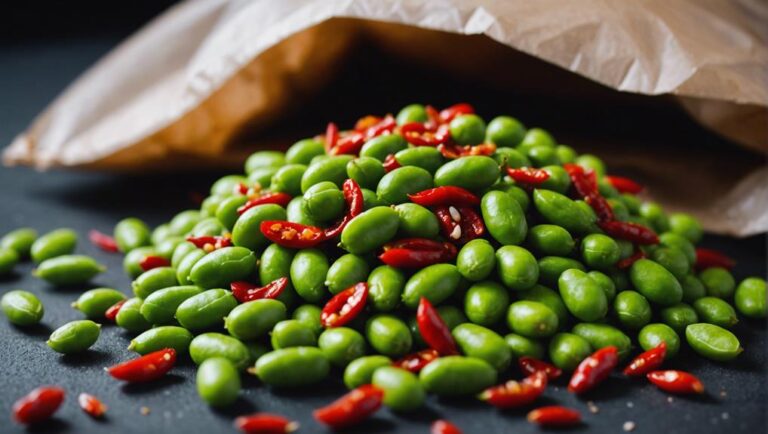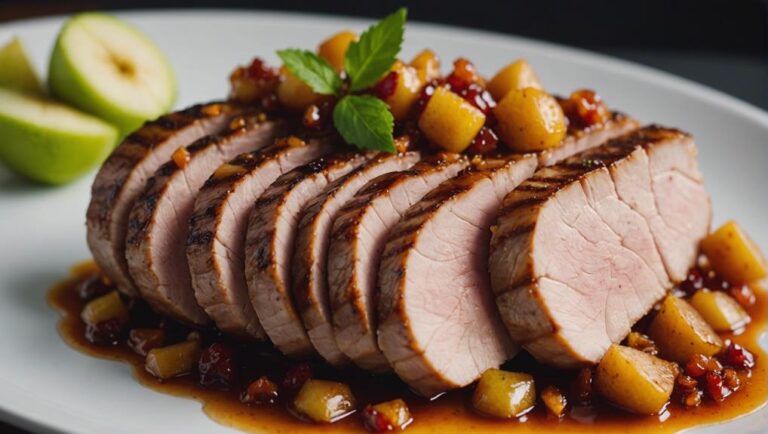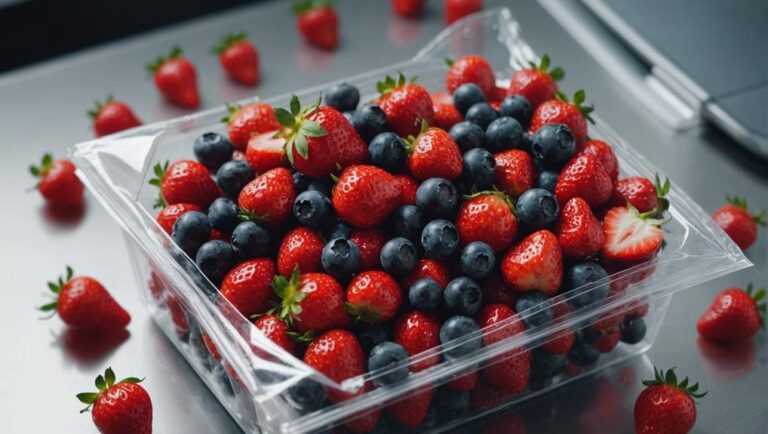Sous Vide Chicken Noodle Soup
Immerse yourself in the exquisite flavors of sous vide chicken noodle soup, a contemporary take on a classic comfort. Delight in the tenderness of the chicken and the vibrant mix of perfectly cooked veggies in every delightful bite. This method locks in moisture and guarantees a truly flavorful experience.
What You Will Learn Here
- Sous vide technique enhances flavors and textures in chicken noodle soup.
- Precise temperature control ensures perfectly cooked chicken for a tender texture.
- Retention of nutrients and juices in sous vide cooking for a flavorful broth.
- Infusion of herbs and spices at consistent temperatures for depth of flavor.
- Meticulous cooking process results in a rich and comforting chicken noodle soup.
Soup's Evolution Over Time
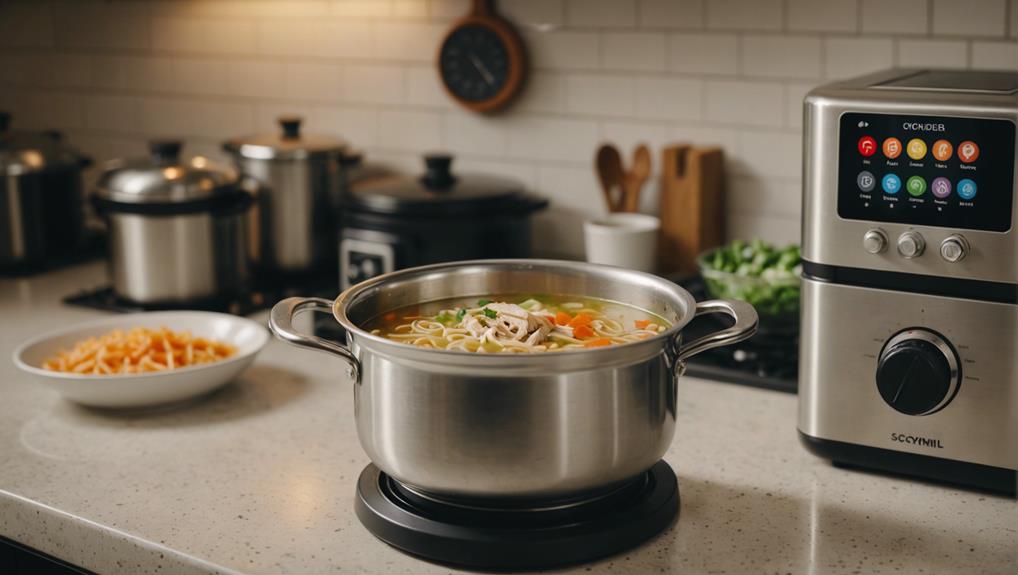
Explore the journey of soup throughout history, from ancient recipes to contemporary culinary creations.
Witness the exploration of traditional flavors into modern innovations that tantalize taste buds.
Dive into the cultural influences that have shaped the diverse world of soups we savor today.
Historical Soup Variations
As time progressed, soup evolved through various cultural influences and culinary innovations, shaping its historical variations into the diverse array of recipes that are familiar today.
Soup history reveals a rich tapestry of traditional recipes that have been passed down through generations, each one reflecting the unique flavors and ingredients of its time and place.
From the hearty stews of medieval Europe to the delicate broths of ancient China, soups have been a staple in diets worldwide. Traditional recipes such as French onion soup, Italian minestrone, and Japanese miso soup showcase the global appeal and adaptability of this comforting dish.
Understanding the historical soup variations provides insight into the culinary heritage that continues to inspire modern interpretations of this beloved comfort food.
Modern Flavor Innovations
Soup's evolution over time has seen modern flavor innovations take center stage, reshaping traditional recipes with new ingredients and techniques. Fusion cuisine and culinary experimentation have revolutionized the soup landscape, introducing unconventional flavor pairings and encouraging taste exploration.
Chefs around the world are pushing boundaries by infusing traditional soups with global influences, creating unique and exciting dishes that challenge the palate. Ingredients like lemongrass, miso, and coconut milk are now commonly found in soups, adding complexity and depth to familiar favorites. Techniques such as sous vide cooking have also brought precise flavors and textures to soups, elevating the dining experience.
Modern flavor innovations continue to inspire chefs and home cooks alike to think outside the pot and experiment with bold new combinations.
Cultural Soup Influences
With influences spanning diverse cultures and traditions, the evolution of soup throughout history showcases a rich tapestry of culinary heritage and regional flavors. Global influences have played a significant role in shaping traditional techniques used in soup-making across various societies.
Fusion flavors have emerged from culinary crossovers, blending ingredients and cooking methods from different cultures to create unique and innovative soup recipes. From the hearty broths of European cuisines to the spicy soups of Asian cultures, the evolution of soup reflects the interconnectedness of global culinary practices.
Each bowl tells a story of migration, trade, and cultural exchange, where recipes traveled across borders, adapted to local ingredients, and transformed to suit evolving palates. The cultural soup influences demonstrate how food transcends geographical boundaries, uniting people through a shared love for comforting and nourishing dishes.
Key Soup Components

When crafting a flavorful chicken noodle soup, the key components that contribute to its rich taste and aroma include the choice of broth, selection of vegetables, and the addition of herbs and spices.
- Broth Basics: The foundation of your soup lies in the broth you choose. Whether you opt for a classic chicken broth, a hearty vegetable broth, or a rich bone broth, the flavor profile of your soup will be greatly influenced by this choice.
- Vegetable Selection: The vegetables you include can add depth and texture to your chicken noodle soup. Traditional choices like carrots, celery, and onions provide a robust flavor base, while additions like leeks or parsnips can offer a unique twist.
- Herbs and Spices: Enhance the taste of your soup by carefully selecting herbs and spices. Common choices like bay leaves, thyme, and parsley can elevate the overall flavor profile. Consider adding a hint of garlic, a dash of paprika, or a sprinkle of dill for added complexity.
Trending Soup Variations
Looking to immerse yourself in your soup game? Try the Sous Vide Ramen Upgrade for a rich and flavorful twist on a classic favorite.
Explore the depths of a savory Miso Broth that will warm you up from the inside out.
Spice things up with a zesty Thai Coconut Soup that brings a fusion of exotic flavors to your bowl.
Sous Vide Ramen Upgrade
Enhancing your ramen experience through sous vide cooking elevates the flavors and textures of this beloved dish to new heights.
- Flavorful Toppings: Sous vide allows you to infuse proteins like pork belly or eggs with intense flavors before adding them to your ramen bowl.
- Broth Variations: Using sous vide techniques, you can precisely control the temperature and time to develop complex flavors in your broth, whether you prefer a rich tonkotsu or a light shoyu base.
- Noodle Upgrades: Sous vide guarantees that your noodles are perfectly cooked to your desired texture, absorbing the broth's flavors without becoming overly mushy.
Savory Miso Broth
To further elevate your culinary repertoire, consider exploring the delectable world of trending soup variations with the savory Miso Broth.
- Miso Umami: The Miso Broth offers a depth of flavor with its rich umami notes, derived from fermented soybeans and barley or rice.
- Asian Fusion: This soup brings together the best of Asian flavors, combining traditional elements with modern culinary techniques to create a unique and satisfying dish.
- Flavorful Broth: The Miso Broth serves as a versatile base for a variety of ingredients, allowing you to customize your soup with your favorite proteins and vegetables while still enjoying the authentic taste of this classic Japanese soup.
Spicy Thai Coconut Soup
Amidst a symphony of bold flavors and creamy textures, the Spicy Thai Coconut Soup stands out as a tantalizing fusion of traditional Thai ingredients and modern culinary creativity.
- Coconut Milk Richness: The velvety coconut milk infuses the soup with a luxurious creaminess that perfectly balances the spicy flavors.
- Spicy Flavors Dance: Each spoonful tantalizes your taste buds with a harmonious blend of heat from chili peppers, lemongrass, and ginger, creating a delightful spicy kick.
- Thai Influences Abound: The aromatic herbs like basil and kaffir lime leaves, alongside the umami depth of fish sauce, transport you to the bustling streets of Thailand with every savory sip.
This soup not only delights the senses but also offers a comforting warmth and a sophisticated flavor profile that will leave you craving more.
Enhancing Soup's Flavor Profile
To elevate your soup's flavor profile, consider using aromatics like onions, garlic, and herbs to provide depth and complexity.
Enhance the umami factor by incorporating ingredients such as mushrooms, miso, or soy sauce for a rich and savory taste.
Allow the flavors to develop by giving the soup ample time to infuse, letting all the elements meld together harmoniously.
Aromatics for Depth
For added depth and richness to your chicken noodle soup, consider infusing it with aromatic ingredients like fresh herbs, garlic, and onions. Aromatic infusions play a key role in achieving a well-rounded flavor balance in your soup. Slow cooking allows these aromatics to release their essential oils and flavors gradually, contributing to the overall depth of the dish. Below is a table outlining some aromatic ingredients you can use to enhance the flavor profile of your chicken noodle soup:
| Aromatic Ingredients | Flavor Contribution |
|---|---|
| Fresh Thyme | Earthy and herbaceous notes |
| Minced Garlic | Pungent and savory elements |
| Diced Onions | Sweetness and depth |
| Bay Leaves | Subtle floral undertones |
| Parsley | Freshness and brightness |
Umami-Rich Ingredients
Enhance the depth and complexity of your chicken noodle soup by incorporating umami-rich ingredients that elevate the flavor profile to a new level of savory satisfaction. When considering umami sensations, think about flavor pairings that will take your taste exploration to the next level.
Ingredients rich in umami, such as mushrooms, miso paste, soy sauce, and Parmesan cheese, can intensify the savory notes in your soup. The key to enhancing your soup's umami factor lies in the careful selection and combination of these ingredient umamis. For example, adding a splash of soy sauce near the end of cooking can bring a depth of flavor that will leave your taste buds craving more.
Experiment with different umami-rich ingredients to find the perfect balance for a truly satisfying soup experience.
Time for Infusion
Infusing your soup with flavors can take it from good to exceptional, creating a taste experience that lingers long after the last spoonful.
To elevate your chicken noodle soup, consider using infusion techniques like simmering herbs and spices in broth before adding other ingredients. This method allows the flavors to meld together, enhancing the overall taste profile of your dish.
Experiment with flavor pairings such as thyme and garlic for a robust herbaceous note, or ginger and lemongrass for an invigorating and aromatic twist.
Final Thoughts
In your culinary journey with sous vide chicken noodle soup, the final thoughts reveal the culmination of flavors and textures that have been meticulously crafted through precise cooking techniques. By combining the sous vide benefits with traditional techniques, you've achieved a soup that surpasses expectations. The flavor retention from the slow cooking techniques employed throughout the sous vide process guarantees that every spoonful is packed with rich, well-developed tastes that linger on your palate.
As you savor the tender chicken shreds, the perfectly cooked vegetables, and the hearty noodles, you can appreciate the depth of flavor that can only be achieved through sous vide cooking. The broth, infused with all the essence of the ingredients, is a confirmation of the patience and care you've put into this dish. Each component harmonizes effortlessly, creating a symphony of tastes that dance on your taste buds.
Frequently Asked Questions
Can Sous Vide Cooking Be Used for Other Soup Recipes?
Yes, you can use sous vide cooking for other soup recipes like beef stew or broccoli cheddar. It guarantees precise temperature control and locks in flavors. The method offers flexibility and convenience, allowing you to experiment with various ingredients.
How Long Can Sous Vide Chicken Noodle Soup Be Stored?
When storing sous vide chicken noodle soup, remember to follow proper storage tips. Pay attention to the expiration date, and consider freezing portions for extended shelf life. Freezing can help maintain the soup's quality for longer periods.
Are There Vegetarian Alternatives to Chicken in This Recipe?
If you're exploring vegetarian options in recipes, consider meat alternatives like tofu, seitan, or tempeh. These protein sources can mimic flavors and textures of meat, adding depth to your dishes while keeping them vegetarian-friendly.
Can Different Types of Noodles Be Used in This Soup?
You can definitely switch up the noodle variations in your soup. Different types like egg noodles, rice noodles, or even spiralized veggies can bring new textures and flavors. Experiment with cooking techniques for exciting results.
What Are Some Creative Garnish Options for Presentation?
For an artistic touch, consider sprinkling your dish with vibrant edible flowers. Elevate flavors and add elegance by drizzling herb-infused oils. These simple garnishes can transform your presentation into a culinary masterpiece.
Conclusion
Indulge your taste buds with a comforting bowl of sous vide chicken noodle soup. The tender chicken, perfectly cooked vegetables, and flavorful broth create a harmonious blend of flavors that will warm your soul.
Elevate your soup game by incorporating sous vide cooking techniques for a modern twist on a classic favorite. Immerse yourself in a bowl of this savory soup and experience a culinary journey like never before.
Bon appétit!
